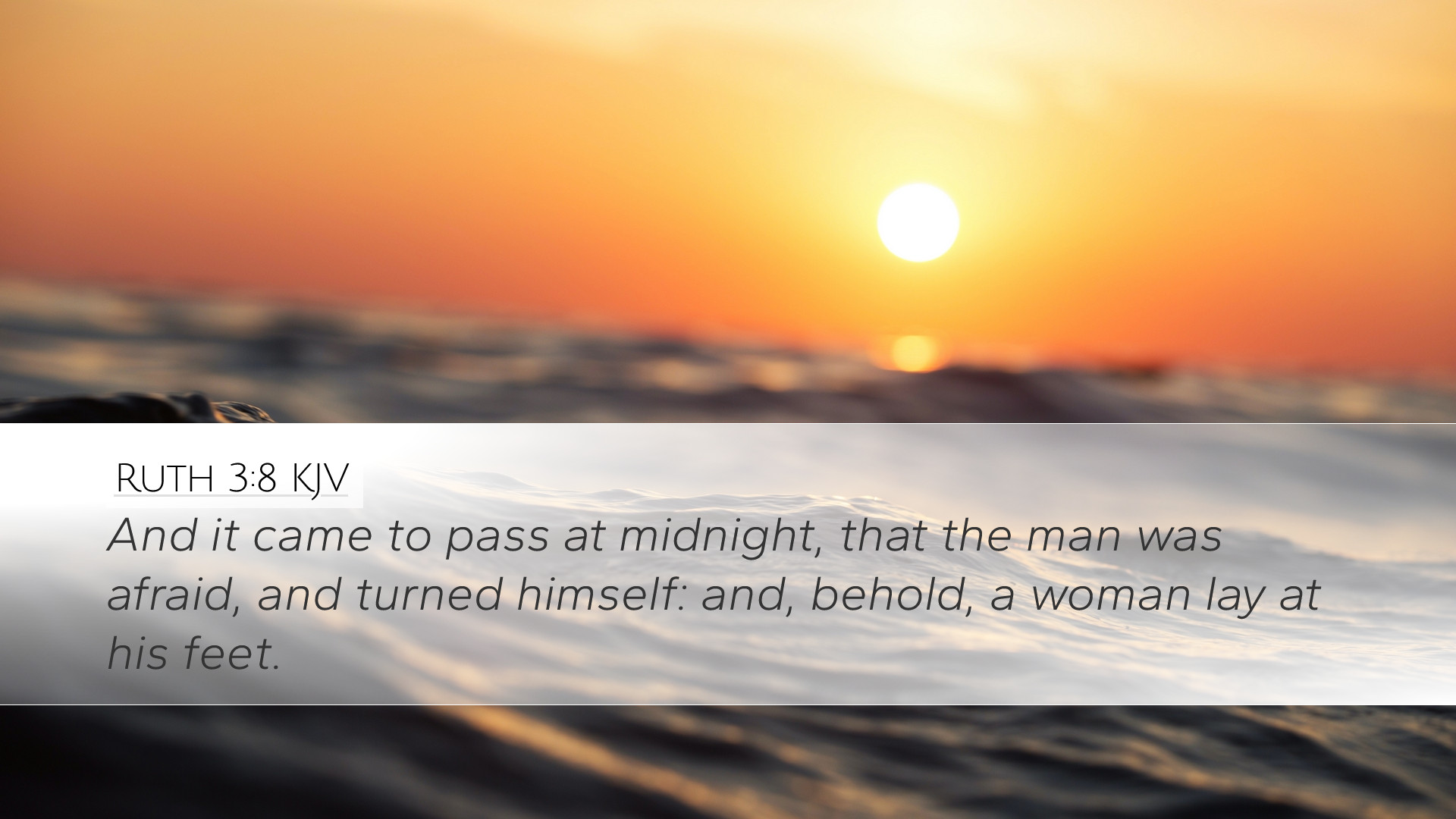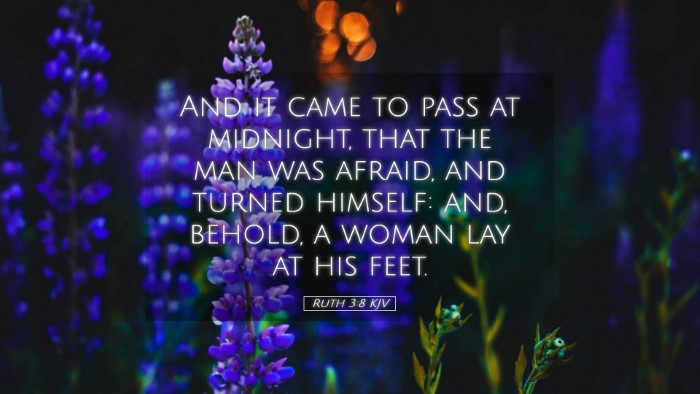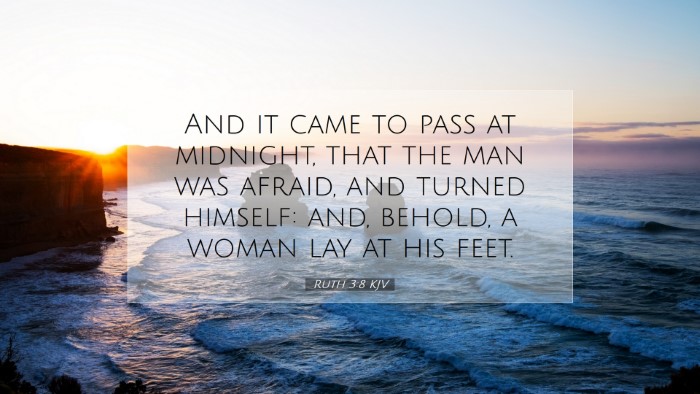Old Testament
Genesis Exodus Leviticus Numbers Deuteronomy Joshua Judges Ruth 1 Samuel 2 Samuel 1 Kings 2 Kings 1 Chronicles 2 Chronicles Ezra Nehemiah Esther Job Psalms Proverbs Ecclesiastes Song of Solomon Isaiah Jeremiah Lamentations Ezekiel Daniel Hosea Joel Amos Obadiah Jonah Micah Nahum Habakkuk Zephaniah Haggai Zechariah MalachiRuth 3:8
Ruth 3:8 KJV
And it came to pass at midnight, that the man was afraid, and turned himself: and, behold, a woman lay at his feet.
Ruth 3:8 Bible Commentary
Commentary on Ruth 3:8
Verse: "And it happened at midnight that the man was startled, and turned himself; and there, a woman was lying at his feet." (Ruth 3:8)
Contextual Background
The Book of Ruth is set in the time of the judges, an era marked by social turmoil and spiritual decline in Israel. Naomi, a widow, returns from Moab with her daughter-in-law Ruth, who is also widowed. Ruth's loyalty and commitment to Naomi highlight themes of faithfulness and providence.
This particular verse falls into the context of the marriage proposal Ruth makes to Boaz, representing a pivotal moment in the narrative filled with cultural and theological significance.
Analysis of the Verse
The sudden awakening of Boaz at midnight suggests a divine orchestration of events that is critical to the unfolding story. This moment reflects key themes such as vulnerability, trust, and divine timing.
- Boaz’s Reaction: The startled response of Boaz symbolizes the unexpected nature of God’s intervention in human affairs. His surprise indicates a moment of realization regarding Ruth's presence and intentions.
- The Significance of Sitting at His Feet: This act of lying at Boaz's feet is not only one of submission but also of seeking protection and favor. In ancient Near Eastern culture, this position could symbolize a request for marriage.
Theological Insights
This verse illustrates profound theological truths that resonate through the entirety of Scripture.
- Divine Providence: The timing of Ruth’s approach at midnight underscores God’s providential care and timing. This depicts how God uses seemingly mundane moments to enact His plans of redemption.
- Ruth as a Symbol of Faith: Ruth's courageous actions present her as a model of faith for believers. By taking the initiative to approach Boaz, she demonstrates active trust in God's provision.
Commentary Insights
In consulting respected public domain commentaries, the following insights emerge:
- Matthew Henry: Henry emphasizes the integrity and strength of Ruth's character, noting that her boldness in approaching Boaz reflects her faith in God's leading. He asserts that God often brings about His purposes in the dark of night when human understanding is clouded.
- Albert Barnes: Barnes elaborates on the cultural implications of Ruth’s actions. He discusses the significance of the kinsman-redeemer role, highlighting that Ruth’s actions were not merely personal desires but an alignment with God’s covenantal laws concerning redemption.
- Adam Clarke: Clarke views this moment as a significant test of character for both Ruth and Boaz. He provides historical context regarding the customs of gleaning and marriage that inform Ruth's actions, facilitating a broader understanding of her motivations.
Practical Applications
This narrative offers practical life applications for pastors, scholars, and laypersons alike:
- Faith in Uncertainty: Like Ruth, believers are encouraged to act in faith, especially in uncertain circumstances, trusting that God oversees every detail of their lives.
- Engagement in God's Plan: Engaging in God's redemptive plan requires courage and initiative, as seen in Ruth’s proactive approach in seeking Boaz’s favor.
- Understanding Relationships: The relational dynamics depicted in this passage provide insights into the importance of integrity and respect in all human interactions, especially in the context of covenantal relationships.
Conclusion
Ruth 3:8 serves as a rich tapestry of themes such as divine providence, character, and faith. It invites readers to reflect on the ways in which God may be working in their lives during periods of uncertainty and invites all to embrace faith that acts. As we delve deeper into this passage, may we recognize the echoes of God’s faithfulness in our own stories, inspiring us to trust in His grand design.


